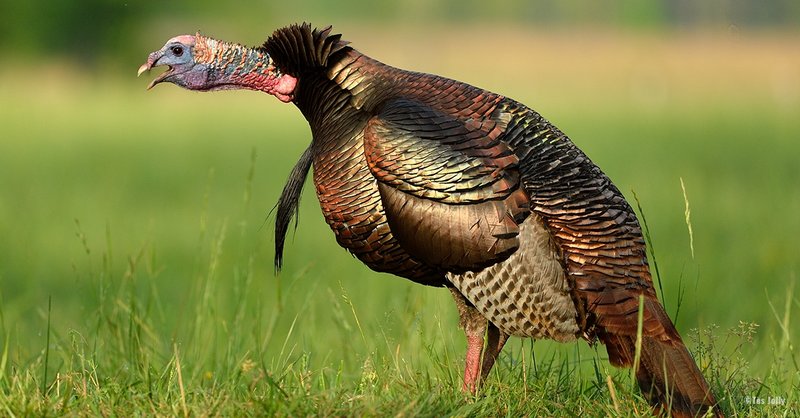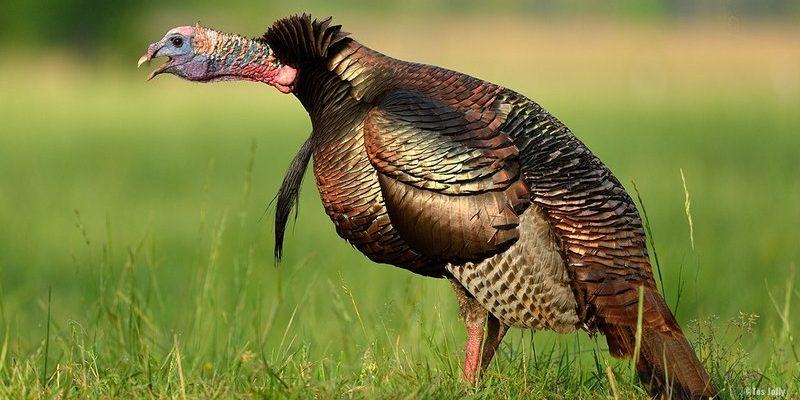
Honestly, understanding turkeys isn’t just about appreciating them as a holiday meal. It’s about connecting with nature and getting to know one of our world’s most unique birds. They have their own personalities, social structures, and even some pretty impressive skills. Let me explain why these birds deserve more than just a cursory glance during the festive season.
1. Turkeys Can Fly
You might be surprised to learn that all turkeys can actually fly, at least for short distances. Wild turkeys are adept flyers and can cover up to 100 yards in a single flight. They take off from the ground, gaining enough altitude to escape predators or reach their roosting spots. Imagine seeing a turkey soaring across the sky like a feathered rocket—that’s a sight!
Domestic turkeys, on the other hand, have often been bred for size, which can make them less capable of flying. Their bulky bodies aren’t designed for flight like their wild cousins. So, while you might see wild turkeys gliding through the trees, domestic ones are more likely to stay firmly planted on the ground.
2. They Have Unique Communication Skills
Turkeys are no silent birds. They communicate using a range of sounds, each with its own meaning. From clucks and purrs to gobbles and yelps, these vocalizations help them express emotions and alert their flock to dangers. Ever heard a turkey gobble? It’s loud and proud!
Interestingly, male turkeys, called toms, are known for their gobbles, which can be heard from quite a distance. This sound acts as both a mating call and a way to establish territory. On the flip side, females, or hens, tend to use softer clucks and purrs to communicate with their chicks. Just think of it as a turkey version of a family chat!
3. They Have Excellent Vision
Turkeys are equipped with some pretty impressive eyesight. They have a nearly 360-degree field of vision thanks to the placement of their eyes on the sides of their heads. This means they can see behind themselves without moving their heads! Talk about an advantage against predators.
Their vision is also highly refined, allowing them to see colors that humans cannot. While we see a limited spectrum, turkeys can detect ultraviolet light, which helps them spot food and identify potential threats. So, the next time you see a turkey out in the wild, remember—they’re not just clumsy; they’ve got some serious visual skills.
4. Turkeys Are Social Creatures
Just like us, turkeys are social animals. They thrive in flocks and have established social hierarchies. In a flock, you’ll find the dominant toms in charge, while hens tend to form close-knit groups. They spend their days foraging for food, grooming each other, and keeping an eye out for danger.
Interestingly, these social interactions are important for their mental and emotional health. Turkeys can get stressed when isolated, much like humans can feel lonely. Keeping them in a group helps them stay calm and happy—just like hanging out with friends after a long day!
5. Turkeys Are Omnivores
Turkeys have a varied diet that includes seeds, nuts, fruits, insects, and even small reptiles. This makes them omnivores, giving them a flexible approach to finding food. In the wild, they’ll spend hours foraging for the tastiest morsels.
Their ability to eat a wide range of foods helps them adapt to different environments. In rural areas, you’ll often find turkeys rummaging through gardens and fields, while urban turkeys might explore parks and neighborhoods. Just imagine a turkey with a taste for adventure, searching for its next snack!
6. They Can Be Quite Playful
You might think of turkeys as serious, but they can be playful, too! In the wild, young turkeys often engage in playful behaviors like chasing each other or hopping around. This not only helps them develop their physical skills but also strengthens their social bonds with one another.
Even in captivity, turkeys can exhibit playful antics. They might enjoy pecking at interesting objects or exploring their surroundings. This playfulness is part of their natural behavior and indicates that they’re well-adapted to their environments.
7. Turkeys Have a Complex Mating Ritual
When it comes to mating, male turkeys put on quite the show to impress females. During the breeding season, toms puff up their feathers, strut around, and display their colorful plumage to attract hens. This ritual often involves a series of gobbles and other vocalizations, creating quite the spectacle.
The hens play hard to get, often inspecting potential mates before making their choice. Once a female decides she’s ready, she’ll mate with the dominant male in the area. Isn’t it interesting how much effort goes into turkey romance?
8. They Domesticated in America
You might be surprised to learn that domestic turkeys originated from wild turkeys in North America. Native Americans were among the first to domesticate them, using their meat and feathers for food, clothing, and ceremonial purposes. This connection to our history adds a layer of depth to the humble turkey.
Today, the domestic turkey has evolved through selective breeding to create larger birds that grow quickly and provide more meat. However, they still share many traits with their wild ancestors, making them a unique blend of history and evolution.
9. Turkeys Play a Role in Ecosystems
Turkeys are more than just a tasty meal; they play an important role in their ecosystems. As omnivores, they help control insect populations and disperse seeds, promoting plant growth. By foraging for food, they also contribute to nutrient cycling in the soil.
Their presence supports other wildlife too. Many species depend on turkeys as a food source, including predators like foxes and hawks. So, next time you see a turkey, remember it’s not just a bird; it’s an important part of the ecosystem tapestry.
10. They Have a Rich Cultural Significance
Turkeys hold a special place in various cultures around the world. In the United States, they symbolize Thanksgiving and are associated with feasting and family gatherings. However, turkeys also appear in folklore and traditional stories, showcasing their value beyond just a meal.
In some cultures, they represent abundance, fertility, and generosity. Understanding this cultural significance gives depth to our relationship with these birds, reminding us that they’ve been part of human life for centuries.
In conclusion, turkeys are far more than just an iconic holiday dish. They’re fascinating creatures with complex behaviors, unique adaptations, and rich histories. The next time you encounter a turkey—whether in the wild or on your plate—remember all the intriguing facts that make them special. So, here’s to appreciating turkeys for all they are!

